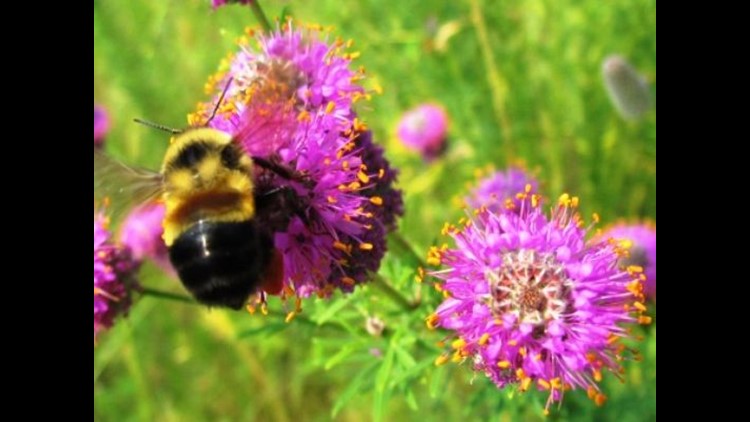A bumblebee is now on the endangered species list for the first time in a "race against extinction," the U.S. Fish and Wildlife Service announced Tuesday.
The agency placed the rusty patched bumblebee on the list because of a dramatic population decline over the past 20 years. Since the late 1990s, the population of the species has plummeted 87%.
Named because of the rust-colored marks on its back, the bee was once common and abundant across 28 states from Connecticut to South Dakota. Today, the bee is only found in small, scattered populations in 13 states.
“Our top priority is to act quickly to prevent extinction of the rusty patched bumblebee," wildlife service Midwest regional director Tom Melius said in a statement. "Listing the bee as endangered will help us mobilize partners and focus resources on finding ways right now to stop the decline."
Bees are responsible for pollinating most of the plants that require insect pollination to produce fruits, seeds and nuts. Like other bees, rusty patched bumblebees pollinate important crops such as tomatoes, cranberries and peppers.
It's not just the rusty patched bumblebee that is struggling in the U.S. Other species have experienced dramatic declines in recent decades. The reduction is believed to be caused by a combination of habitat loss, disease, pesticide use, climate change and an extremely small population size.
The endangered designation is made by the U.S. Fish and Wildlife Service under the Endangered Species Act for species at risk of becoming extinct throughout all or a portion of their range.
Environmental groups praised the designation, including the group that originally petitioned for the listing in 2013, the Xerces Society for Invertebrate Conservation: "We are very pleased to see one of North America’s most imperiled species receive the protection it needs,” said Sarina Jepsen, director of endangered species for the group.
Environment America’s Christy Leavitt said that “protecting the rusty patched bumblebee and all bees is essential for our ecosystem and our food supply. If bees go extinct, it’s simple: no bees, no food," she added.
“Today’s Endangered Species listing is the best — and probably last — hope for the recovery of the rusty patched bumblebee," said Rebecca Riley, and attorney with the Natural Resources Defense Council. "Bumblebees are dying off, vanishing from our farms, gardens, and parks, where they were once found in great numbers."
People can help boost the rusty patched bumblebee population by growing a garden or adding a native flowering tree or shrub to yards and minimizing pesticide use, the U.S. Fish and Wildlife Service said. Leaving some areas of the yard unmowed in summer and unraked in fall can also help since bumblebees need a safe place to build their nests and overwinter. Additionally, try leaving some standing plant stems in gardens and flower beds in winter.
This is the first bee of any type in the continental U.S. to be placed on the list. In September, the Obama administration designated seven species of bees in Hawaii as endangered.



